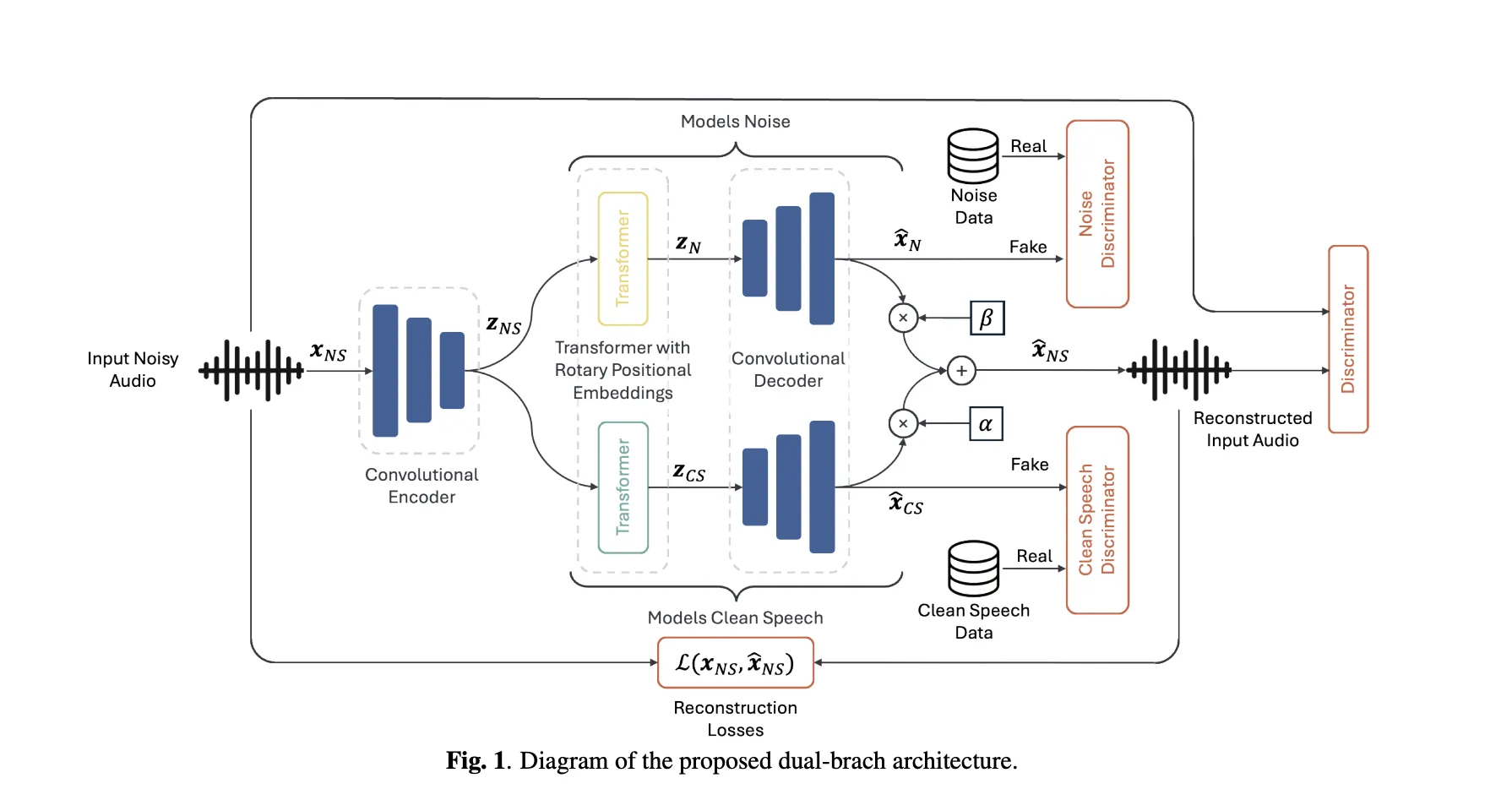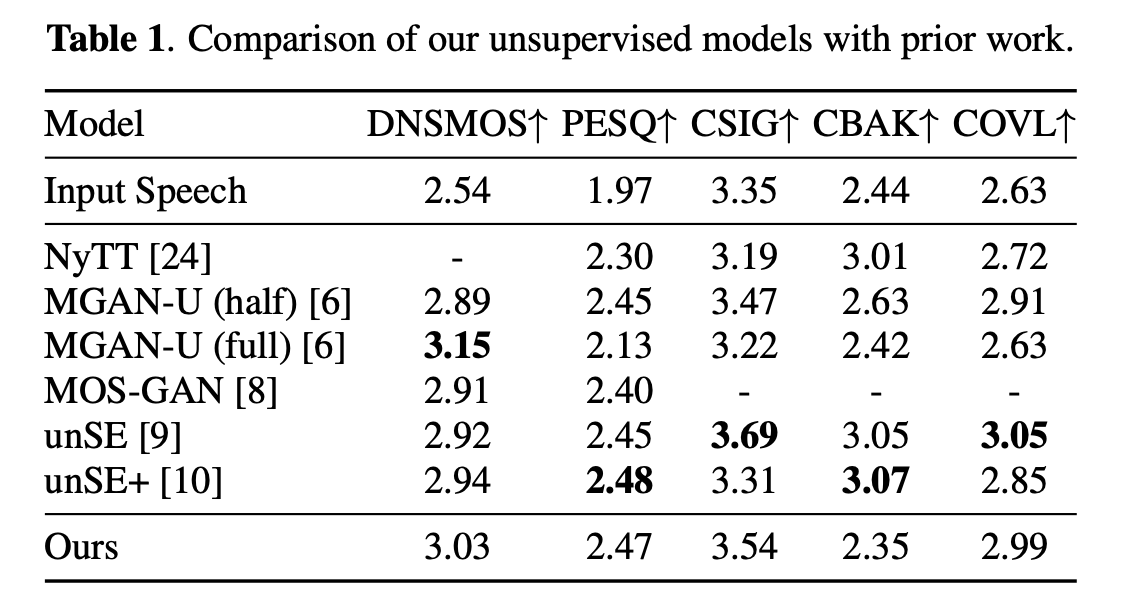Can a speech enhancer skilled solely on actual noisy recordings cleanly separate speech and noise—with out ever seeing paired knowledge? A workforce of researchers from Brno College of Expertise and Johns Hopkins College proposes Unsupervised Speech Enhancement utilizing Information-defined Priors (USE-DDP), a dual-stream encoder–decoder that separates any noisy enter into two waveforms—estimated clear speech and residual noise—and learns each solely from unpaired datasets (clean-speech corpus and optionally available noise corpus). Coaching enforces that the sum of the 2 outputs reconstructs the enter waveform, avoiding degenerate options and aligning the design with neural audio codec goals.

Why that is necessary?
Most learning-based speech enhancement pipelines rely upon paired clear–noisy recordings, that are costly or unimaginable to gather at scale in real-world circumstances. Unsupervised routes like MetricGAN-U take away the necessity for clear knowledge however couple mannequin efficiency to exterior, non-intrusive metrics used throughout coaching. USE-DDP retains the coaching data-only, imposing priors with discriminators over unbiased clean-speech and noise datasets and utilizing reconstruction consistency to tie estimates again to the noticed combination.
The way it works?
- Generator: A codec-style encoder compresses the enter audio right into a latent sequence; that is break up into two parallel transformer branches (RoFormer) that concentrate on clear speech and noise respectively, decoded by a shared decoder again to waveforms. The enter is reconstructed because the least-squares mixture of the 2 outputs (scalars α, β compensate for amplitude errors). Reconstruction makes use of multi-scale mel/STFT and SI-SDR losses, as in neural audio codecs.
- Priors by way of adversaries: Three discriminator ensembles—clear, noise, and noisy—impose distributional constraints: the clear department should resemble the clean-speech corpus; the noise department should resemble a noise corpus; the reconstructed combination should sound pure. LS-GAN and feature-matching losses are used.
- Initialization: Initializing encoder/decoder from a pretrained Descript Audio Codec improves convergence and closing high quality vs. coaching from scratch.
The way it compares?
On the usual VCTK+DEMAND simulated setup, USE-DDP experiences parity with the strongest unsupervised baselines (e.g., unSE/unSE+ based mostly on optimum transport) and aggressive DNSMOS vs. MetricGAN-U (which straight optimizes DNSMOS). Instance numbers from the paper’s Desk 1 (enter vs. methods): DNSMOS improves from 2.54 (noisy) to ~3.03 (USE-DDP), PESQ from 1.97 to ~2.47; CBAK trails some baselines attributable to extra aggressive noise attenuation in non-speech segments—in step with the express noise prior.


Information alternative shouldn’t be a element—it’s the consequence
A central discovering: which clean-speech corpus defines the prior can swing outcomes and even create over-optimistic outcomes on simulated assessments.
- In-domain prior (VCTK clear) on VCTK+DEMAND → greatest scores (DNSMOS ≈3.03), however this configuration unrealistically “peeks” on the goal distribution used to synthesize the mixtures.
- Out-of-domain prior → notably decrease metrics (e.g., PESQ ~2.04), reflecting distribution mismatch and a few noise leakage into the clear department.
- Actual-world CHiME-3: utilizing a “close-talk” channel as in-domain clear prior really hurts—as a result of the “clear” reference itself accommodates setting bleed; an out-of-domain really clear corpus yields larger DNSMOS/UTMOS on each dev and take a look at, albeit with some intelligibility trade-off underneath stronger suppression.
This clarifies discrepancies throughout prior unsupervised outcomes and argues for cautious, clear prior choice when claiming SOTA on simulated benchmarks.
The proposed dual-branch encoder-decoder structure treats enhancement as express two-source estimation with data-defined priors, not metric-chasing. The reconstruction constraint (clear + noise = enter) plus adversarial priors over unbiased clear/noise corpora offers a transparent inductive bias, and initializing from a neural audio codec is a realistic approach to stabilize coaching. The outcomes look aggressive with unsupervised baselines whereas avoiding DNSMOS-guided goals; the caveat is that “clear prior” alternative materially impacts reported beneficial properties, so claims ought to specify corpus choice.
Take a look at the PAPER. Be happy to take a look at our GitHub Web page for Tutorials, Codes and Notebooks. Additionally, be at liberty to observe us on Twitter and don’t overlook to hitch our 100k+ ML SubReddit and Subscribe to our Publication. Wait! are you on telegram? now you possibly can be a part of us on telegram as effectively.

Michal Sutter is a knowledge science skilled with a Grasp of Science in Information Science from the College of Padova. With a stable basis in statistical evaluation, machine studying, and knowledge engineering, Michal excels at remodeling complicated datasets into actionable insights.
Elevate your perspective with NextTech Information, the place innovation meets perception.
Uncover the newest breakthroughs, get unique updates, and join with a world community of future-focused thinkers.
Unlock tomorrow’s traits at this time: learn extra, subscribe to our e-newsletter, and turn out to be a part of the NextTech group at NextTech-news.com

